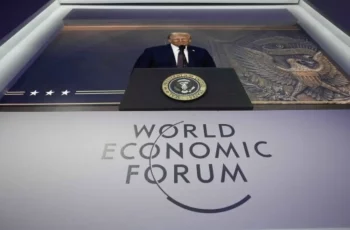
The precedent set by Russia’s restrained response to Ukraine obtaining the F-16s, which could also be nuclear-equipped, suggests that tensions with the US will remain manageable if Ukraine obtains the Tomahawks too due to the modus vivendi that’s arguably been in place for managing them.
The latest talk about the US transferring longer-range Tomahawk cruise missiles to Ukraine, which Putin said earlier this month could only be used with US military personnel’s direct involvement, has prompted concerns about a potentially uncontrollable escalation spiral. Russian Deputy Foreign Minister Sergey Ryabkov assessed that such a development would lead to “a significant change in the situation” but nonetheless reaffirmed that it wouldn’t prevent Russia from achieving its goals in the special operation.
Ukraine’s explicitly stated goal in obtaining these arms is to “pressure” Russia into freezing the Line of Contact without any concessions from Kiev, which would essentially amount to Moscow conceding on its aforesaid goals since none would be achieved in full should that happen, ergo why it hasn’t agreed. In pursuit of that end, Ukraine threatened to cause a blackout in the Russian capital, which would likely be accompanied by more attacks against civilian and military logistics targets far behind the frontlines.
Some are therefore worried that that Russian-US tensions could spiral out of control, especially after Kremlin spokesman Dmitry Peskov noted that the Tomahawks can be nuclear-equipped, but the precedent set by the F-16s suggests that they’ll remain manageable. Putin himself warned in early 2024 that they too could be nuclear-equipped, yet Russia ultimately didn’t treat their use as a potential nuclear first-strike. This is arguably due to the modus vivendi that was described here in late 2024:
“[Comparatively pragmatic US ‘deep state’ figures] who still call the shots always signal their escalatory intentions far in advance so that Russia could prepare itself and thus be less likely to ‘overreact’ in some way that risks World War III. Likewise, Russia continues restraining itself from replicating the US’ ‘shock-and-awe’ campaign in order to reduce the likelihood of the West ‘overreacting’ by directly intervening in the conflict to salvage their geopolitical project and thus risking World War III.
It can only be speculated whether this interplay is due to each’s permanent military, intelligence, and diplomatic bureaucracies (‘deep state’) behaving responsibly on their own considering the enormity of what’s at stake or if it’s the result of a ‘gentlemen’s agreement’. Whatever the truth may be, the aforesaid model accounts for the unexpected moves or lack thereof from each, which are the US correspondingly telegraphing its escalatory intentions and Russia never seriously escalating in kind.”
The latest talk about the US transferring longer-range Tomahawk cruise missiles to Ukraine fits the pattern of leaks serving to tip Russia off about this preplanned escalation so it can prepare its responses in advance. Time and again, Putin has exercised an almost saintly degree of self-restraint in refusing to escalate, whether symmetrically or asymmetrically. Readers can learn more about these precedents from the eight analyses enumerated in the one from late 2024 that was hyperlinked to above.
The only exception was him authorizing the use of the Oreshniks in November after the US and UK let Ukraine use their long-range missiles inside of Russia, obviously through the direct involvement of their military personnel, which he might repeat if Ukraine obtains the Tomahawks. He didn’t authorize them after Ukraine’s strategic drone strikes against parts of Russia’s nuclear triad in June that were much more provocative, however, which might have been due to his diplomatic calculations vis-à-vis Trump.
Whether one agrees with the policy or not, it’s arguably the case that Putin wants to avoid doing anything that could reaffirm Trump’s perception (carefully crafted by the warmongers around him like Zelensky and Lindsey Graham) that Russia is escalating, thus falsely justifying “reciprocal US escalations”. So long as he continues formulating policy based on this calculation, and there’s no credible indication thus far that it’s changed, then any escalation over the Tomahawks will likely remain manageable.
Source: author’s blog










Comments